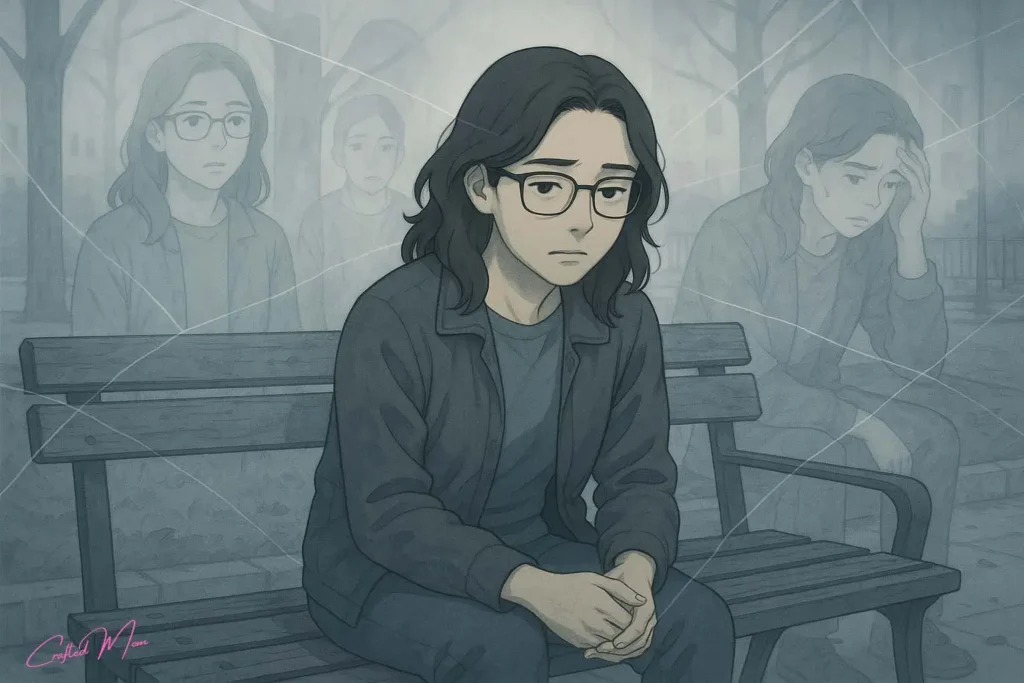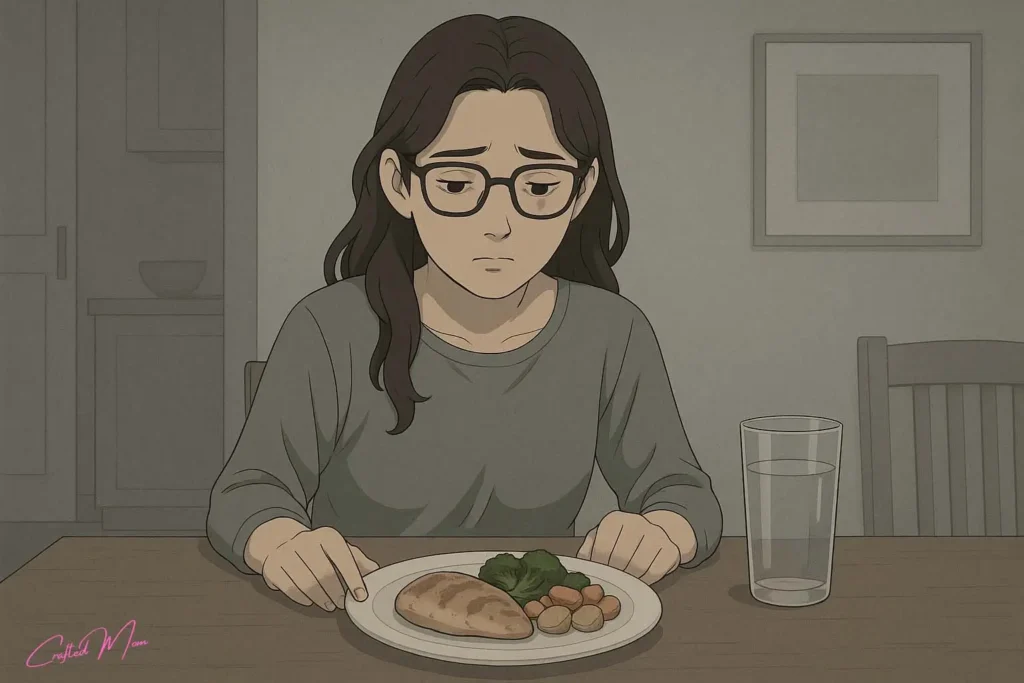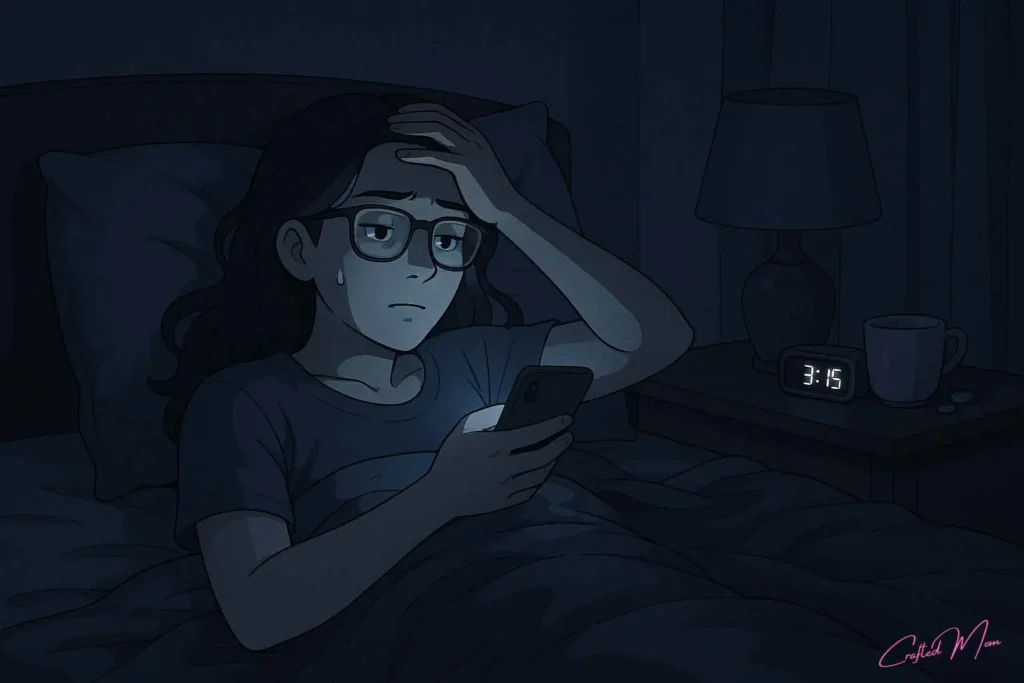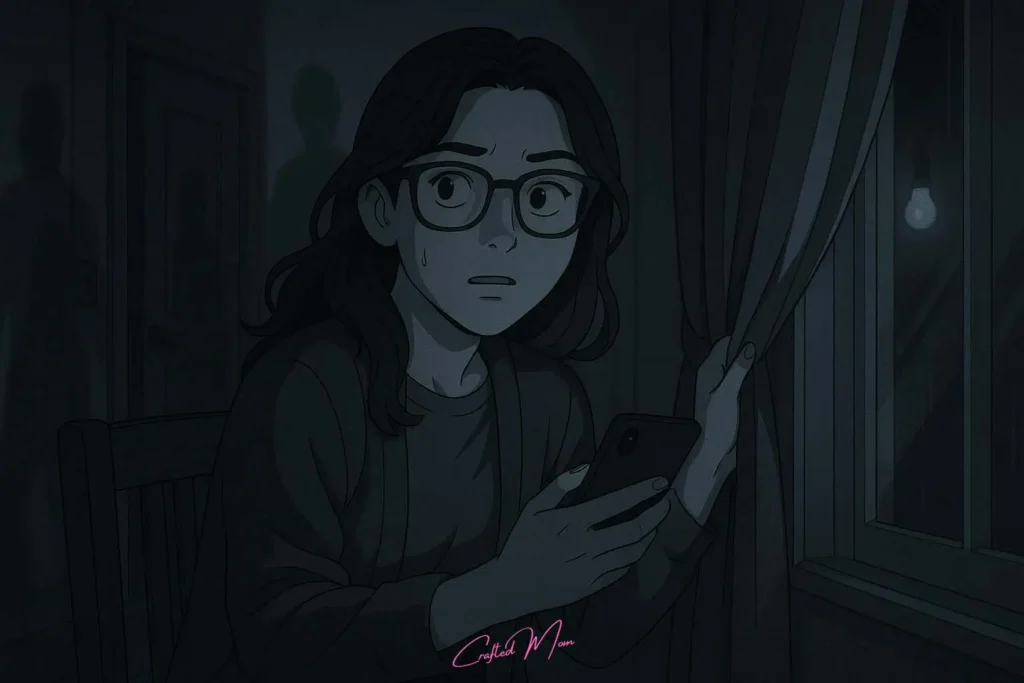Let’s be honest, mental health talk used to be taboo. Especially for moms. You’re supposed to hold it all together, smile through exhaustion, and juggle everything from diaper blowouts to dinner prep like a pro. But what happens when you start unraveling? Or when someone you love starts acting… different?
As a mom and a mental health advocate, I’ve seen firsthand how overwhelming it can be to navigate mental disorders, not just in your own life, but in your kids’, your partner’s, even your friends’. And here’s the thing: understanding mental disorders isn’t just for psychologists. It’s for moms like us who are trying to love harder, support better, and raise our families in a world that doesn’t always make space for mental health.
In this guide, I’m breaking down some of the most common mental disorders in a way that makes sense. No medical jargon, no fearmongering, just real talk, facts, and encouragement. Whether you’re dealing with anxiety, PTSD, ADHD, or something else entirely, you’re not alone. Millions of families face these struggles, and the more we understand, the more we can support.
According to the World Health Organization, over 1 in 8 people live with a mental disorder globally. That’s not rare. That’s real. Source
So, grab your coffee (or reheat it for the third time, we’ve all been there), and let’s talk about what’s really going on beneath the surface. Because mental health isn’t a weakness, it’s part of being human. And trust me, you’ve got what it takes to face it, with grace, grit, and a little guidance.
Every Mental Disorder Explained
1. Post-Traumatic Stress Disorder (PTSD): Reliving the Trauma

Let me tell you, PTSD isn’t just something you “get over.” As a psychology doc and a mom, I’ve seen first-hand how this invisible monster can hijack your everyday life.
What Is PTSD, really?
PTSD, or Post-Traumatic Stress Disorder, happens when your brain gets stuck in “survival mode” long after the danger’s passed. It usually shows up after a major traumatic event, think car crashes, combat, sexual assault, or long-term abuse. It’s especially common among veterans, first responders, and abuse survivors. But honestly, it can happen to anyone who’s gone through something deeply terrifying or life-threatening.
According to the U.S. Department of Veterans Affairs, about 6% of the U.S. population will experience PTSD at some point in their lives, and around 12 million adults are living with it in any given year. Source: https://www.ptsd.va.gov/understand/common/common_adults.asp
The Symptoms Are Real, and Brutal
PTSD doesn’t knock politely. It barges in with:
- Flashbacks so vivid, it feels like you’re right back in the moment
- Nightmares that jolt you awake, heart pounding
- Physical reactions to triggers, like breaking into a sweat when you hear a siren or smell something that reminds you of the trauma
Sometimes it’s a sound. Sometimes it’s a smell. Sometimes, it’s nothing at all. And that’s what makes it so hard, your brain replays the trauma like a horror movie on shuffle. No warning, no pause button.
Why It Matters
PTSD doesn’t just affect the person who has it. It ripples through families, relationships, and even work life. Imagine trying to parent through panic attacks or maintain a job when you can’t sleep through the night. It’s exhausting, both mentally and physically.
But there’s hope, therapy, medication, and trauma-informed support groups have changed lives. I’ve seen clients who couldn’t even leave their homes go on to live full, vibrant lives. Healing is slow, but it’s possible. If you or someone you love is struggling, don’t brush it off, get support.
2. Bipolar Disorder: Extreme Emotional Highs and Lows

If you’ve ever watched someone flip from being the life of the party to barely getting out of bed the next week, you might’ve seen bipolar disorder up close. And trust me, it’s not just “moodiness.” It’s a full-blown rollercoaster with no emergency brake.
Understanding the Mood Swings
Bipolar disorder shows up in two main acts: the manic phase and the depressive phase. And they’re both intense.
The Manic Phase
This is when energy skyrockets. People talk a mile a minute, barely sleep, take wild risks, and feel like they’re invincible. It might look fun from the outside, but behind the scenes, it’s overwhelming and often dangerous.
The Depressive Phase
Then comes the crash. We’re talking about deep hopelessness, major fatigue, and a heavy fog of disinterest in things that once brought joy. It’s like trying to move through wet cement, exhausting and unrelenting.
What makes bipolar disorder so complex is that these phases aren’t predictable. They can last days, weeks, or even months. And between episodes, a person might feel totally fine, like nothing ever happened. That unpredictability? It’s one of the toughest parts to manage.
Causes and How Common It Is
Bipolar disorder is often tied to genetics, brain chemistry, and certain environmental stressors. If it runs in the family, the chances go up. But it can also be triggered by trauma, substance use, or major life changes.
Globally, over 40 million people live with bipolar disorder, according to the World Health Organization. That’s a staggering number.
Living With Bipolar: Not Just Mood Swings
Let me be real here, bipolar disorder isn’t just about feeling “super happy” one day and “a little down” the next. It disrupts relationships, work, parenting, you name it. Imagine trying to raise kids while managing a manic episode. Not easy.
But with the right treatment plan, usually a mix of mood stabilizers, therapy, and strong support systems, life can be more manageable. Many people with bipolar disorders go on to lead fulfilling, beautiful lives. It takes time, patience, and a whole lot of compassion, but healing happens.
3. Schizophrenia: When Reality Becomes Confusing

Ever feel like your mind is playing tricks on you? For people with schizophrenia, that’s a daily reality. It’s not about “split personality” like the movies love to show, it’s deeper and far more complex.
Hallucinations and Delusions
Folks with schizophrenia might:
- Hear voices or see things that aren’t there
- Firmly believe in things others see as impossible, like being followed by the government or having secret powers
It’s not just imagination; it feels 100% real to them.
Challenges in Diagnosis
Sadly, schizophrenia is wildly misunderstood. Many confuse it with multiple personality disorders, which it isn’t. And because symptoms often show up in late teens or early adulthood, they’re sometimes brushed off as stress or rebellion.
There’s no outright cure, but antipsychotic meds, therapy, and consistent support can really help manage daily life. According to the National Institute of Mental Health, about 0.25% to 0.64% of the U.S. population lives with schizophrenia. Source
Living with it is like flipping through channels, except none of them match reality. But with the right tools, people can learn to tune back into their lives.
4. Depressive Disorder: The Colorless World

Let’s be real, depression isn’t just “feeling sad.” It’s like someone sucked the color out of your world and left you stuck in grayscale. I’ve been there with clients, and I’ve even felt a bit of it myself during tough seasons of life.
What Depression Feels Like
It’s more than a bad mood. It’s:
- That heavy, hopeless feeling that just won’t lift
- Losing interest in things that used to light you up, music, family, even food
You start wondering, “Why bother?” And that’s terrifying.
The Behavioral Shift Is Real
Depression messes with everything:
- Sleep patterns? All over the place.
- Appetite? Either you can’t stop eating or you forget to eat at all.
- Energy? Completely zapped.
It can make the smallest tasks, like brushing your teeth or answering a text, feel like climbing Everest.
According to the World Health Organization, more than 280 million people suffer from depression worldwide.
The good news? Therapy, lifestyle changes, and medication can make a huge difference. It takes time and support, but color does return, little by little.
5. Anxiety Disorder: Fear Without a Cause

Imagine feeling like you’re being chased by a bear with an axe… while you’re literally just folding laundry. That’s anxiety in a nutshell.
Constant State of Worry
It shows up as:
- Racing heart, sweaty palms, and that sinking feeling in your stomach
- Obsessing over what might go wrong or replaying what already did
Even simple tasks can feel like high-stakes missions.
When It Becomes a Disorder
It’s normal to feel anxious sometimes. But when that worry takes over your job, your sleep, or your relationships, it’s something more.
According to the World Health Organization, 301 million people around the world live with some form of anxiety disorder.
The good news? Cognitive-behavioral therapy (CBT), breathing exercises, and even daily habits like sleep and nutrition can really help calm the nervous system. You’re not alone, and you’re not weak, you’re just wired a bit differently, and that’s okay.
6. Eating Disorders: A Toxic Relationship with Food

When your brain becomes your worst critic, even a sandwich can feel like the enemy. Eating disorders aren’t about vanity, they’re about pain, control, and survival.
Types of Eating Disorders
There’s no one-size-fits-all:
- Anorexia nervosa: severe food restriction and an intense fear of weight gain
- Bulimia nervosa: a painful cycle of bingeing, then purging through vomiting or over-exercising
- Binge eating disorder: episodes of uncontrollable eating, followed by guilt and shame
Each is fueled by distorted body image and deep emotional struggle.
Root Causes Run Deep
These disorders often trace back to trauma, anxiety, depression, or low self-worth. Social media pressure doesn’t help either, especially for teens or young adults.
According to the National Association of Anorexia Nervosa and Associated Disorders (ANAD), 9% of the U.S. population will have an eating disorder in their lifetime. Source
The brain becomes a bully, relentlessly criticizing, comparing, and controlling. But healing is possible with therapy, support, and compassion. Trust me, I’ve seen that light come back in people’s eyes. It’s beautiful.
7. ADHD (Attention Deficit Hyperactivity Disorder):

Imagine your brain as a full-blown circus, acrobats, clowns, and fire breathers all demanding your attention at the same time. That’s ADHD for a lot of folks.
Main Types of ADHD
ADHD shows up differently in everyone:
- Inattentive type: Constantly zoning out, forgetting tasks, losing things
- Hyperactive-Impulsive type: Fidgeting, blurting things out, talking a mile a minute
- Combined type: A little bit of both, and then some
It’s not just a “kid thing” either. Adults have it too, and many go undiagnosed for years.
The Real-Life Struggle
ADHD can make daily life feel chaotic. From unfinished chores to forgotten appointments, it often looks like disorganization or carelessness. But it’s not laziness, it’s literally how the brain is wired.
According to the CDC, about 6 million children in the U.S. have been diagnosed with ADHD, and many carry it into adulthood.
The good news? Tools like behavioral therapy, structure, and in some cases, medication, can help turn the mental circus into a more manageable show.
8. Obsessive-Compulsive Disorder (OCD):

Imagine having a bossy voice in your head that won’t shut up until you check the door again, even though you know it’s locked. That’s OCD in a nutshell.
Obsessions vs. Compulsions
OCD is made up of two exhausting parts:
- Obsessions: intrusive, unwanted thoughts like “What if I forgot to turn off the stove?” or “What if I make someone sick?”
- Compulsions: repetitive actions, like washing your hands until they’re raw or checking the lights a dozen times
And no, people with OCD aren’t “just neat freaks.” That stereotype drives me bananas.
Coping Isn’t Always Obvious
Most people with OCD know their fears aren’t logical, but the anxiety is so overwhelming that rituals become their only way to cope. It’s not about wanting control; it’s about needing relief.
Roughly 2.3% of the global population struggles with OCD, according to the World Health Organization.
With therapy, especially Exposure and Response Prevention (ERP), and sometimes meds, that inner voice can get a little quieter. And life? A whole lot lighter.
9. Autism Spectrum Disorder (ASD): A Unique Perspective on the World

Autism isn’t a flaw; it’s just a different way of experiencing life. Think of it like running a different brain operating system: more focused, often detail-obsessed, and beautifully unique.
Traits of ASD
People with autism might:
- Struggle with social cues or small talk
- Prefer routines, find comfort in repetition
- Have deep, intense interests (we’re talking encyclopedia-level focus)
And let’s be clear, it’s not about being “less than,” it’s about being wired differently.
The Spectrum Is Just That, a Spectrum
No two people with ASD are exactly alike. Some are non-verbal, while others are brilliant speakers, coders, artists, or musicians. Some need full-time support, others live fully independent lives.
According to the CDC, about 1 in 36 children in the U.S. has been identified with ASD.
What do they all share? A perspective the rest of us can learn from, if we’re willing to listen.
10. Sleep Disorders: When Rest Becomes a Battle

Ever spent the whole night tossing and turning, only to wake up feeling like a zombie in a fog? Welcome to the frustrating world of sleep disorders.
Common Sleep Disorders
There’s more than just a bad night’s rest here:
- Insomnia: can’t fall asleep, can’t stay asleep, or both
- Narcolepsy: falling asleep without warning, even in the middle of the day
- Sleep apnea: repeated breathing interruptions that jolt you awake, often without you even realizing it
It’s not just annoying, it’s exhausting.
The Side Effects Are No Joke
Chronic sleep issues can lead to:
- Irritability, poor focus, and major mood swings
- Memory lapses and increased risk of heart disease, diabetes, and even depression
According to the American Sleep Association, about 50 to 70 million U.S. adults suffer from a sleep disorder.
When sleep goes sideways, everything else starts to unravel. But with proper diagnosis, lifestyle changes, and sometimes CPAP or therapy, sleep can become restful again, not a nightly battle.
11. Paranoia: The Mind of a Suspicious Detective

Paranoia is like having your brain stuck in detective mode, with zero chill. You’re constantly scanning for threats, even when none exist.
What Is Paranoia?
It often shows up as:
- Deep mistrust of people, even close friends or family
- A belief that others are out to harm, betray, or deceive you
These aren’t just casual worries, they feel very real and can be terrifying.
How It Affects Daily Life
People struggling with paranoia may:
- Get easily offended or lash out in anger
- Withdraw from relationships or become controlling to “protect” themselves
It’s emotionally draining, for them and everyone around them.
Paranoia can be a symptom of other mental health conditions, like paranoid personality disorder or schizophrenia, and it may be linked to trauma, chronic stress, or even genetics.
According to the National Alliance on Mental Illness (NAMI), paranoid thoughts are common in psychotic disorders but can also occur independently.
With paranoia, your brain becomes a war room, constantly plotting defenses against invisible enemies. But with therapy and sometimes medication, that inner alarm system can be dialed down.
12. Dyslexia: A Different Path to Learning

Dyslexia doesn’t mean someone’s not smart, it just means their brain takes a different route to get to the same destination. And honestly? That route can be pretty amazing.
Learning Difficulties
Kids and adults with dyslexia may:
- Struggle with reading, spelling, or writing
- Mix up letters, flip numbers, or read more slowly
It can be frustrating, especially in traditional school settings where everything moves fast and reading is king.
Intelligence Isn’t the Issue
Here’s the truth: dyslexia has zero to do with intelligence. In fact, many people with it are brilliant thinkers, artists, engineers, and problem-solvers.
Famous dyslexics? Albert Einstein, Whoopi Goldberg, Steven Spielberg, just to name a few.
Roughly 5–10% of the population has dyslexia, according to the International Dyslexia Association, and it’s often hereditary.
With the right support, like multisensory learning, reading specialists, and a whole lot of encouragement, people with dyslexia can absolutely thrive.
Final Thoughts: Understanding Mental Disorders
If there’s one thing I’ve learned as both a psychologist and a mom, it’s this, mental disorders don’t define a person. They’re just one part of the story.
Yes, these conditions affect millions worldwide, from anxiety and PTSD to dyslexia and autism. But no two experiences are exactly alike. Some people need more support, some benefit from medication, and others thrive with therapy, structure, or simply feeling understood. For moms especially, recognizing every manipulation tactic they should know can be a game-changer in creating a healthier emotional environment for themselves and their families.
The key? Early diagnosis, real support, and zero shame.
Let’s stop whispering about mental health like it’s taboo. Let’s talk openly, love boldly, and remind each other that struggling doesn’t make us weak, it makes us human.
And if you’re reading this and seeing yourself (or someone you love) in any of these descriptions? Please know you’re not alone, and it’s okay to ask for help. Healing is possible and so is hope.
Frequently Asked Questions:
How do I know if it’s stress or a mental disorder?
It’s normal to feel stressed sometimes, especially as a mom. But if the sadness, anxiety, or overwhelm sticks around for weeks and starts affecting your sleep, energy, or ability to function day-to-day, it may be more than just stress. That’s when it’s time to check in with a professional.
Can mental health issues really affect my body too?
Yes, 100%. Mental health and physical health are deeply connected. Anxiety, depression, and chronic stress can lead to headaches, fatigue, digestive problems, and even heart issues. If your body’s acting off and doctors can’t find a cause, it might be worth looking at your mental health.
Is there a way to prevent mental health disorders?
You can’t always prevent them, especially if genetics or trauma are involved. But living a balanced life, getting good sleep, moving your body, building supportive relationships, and managing stress, can really help reduce your risk and make symptoms easier to manage if they do show up.

